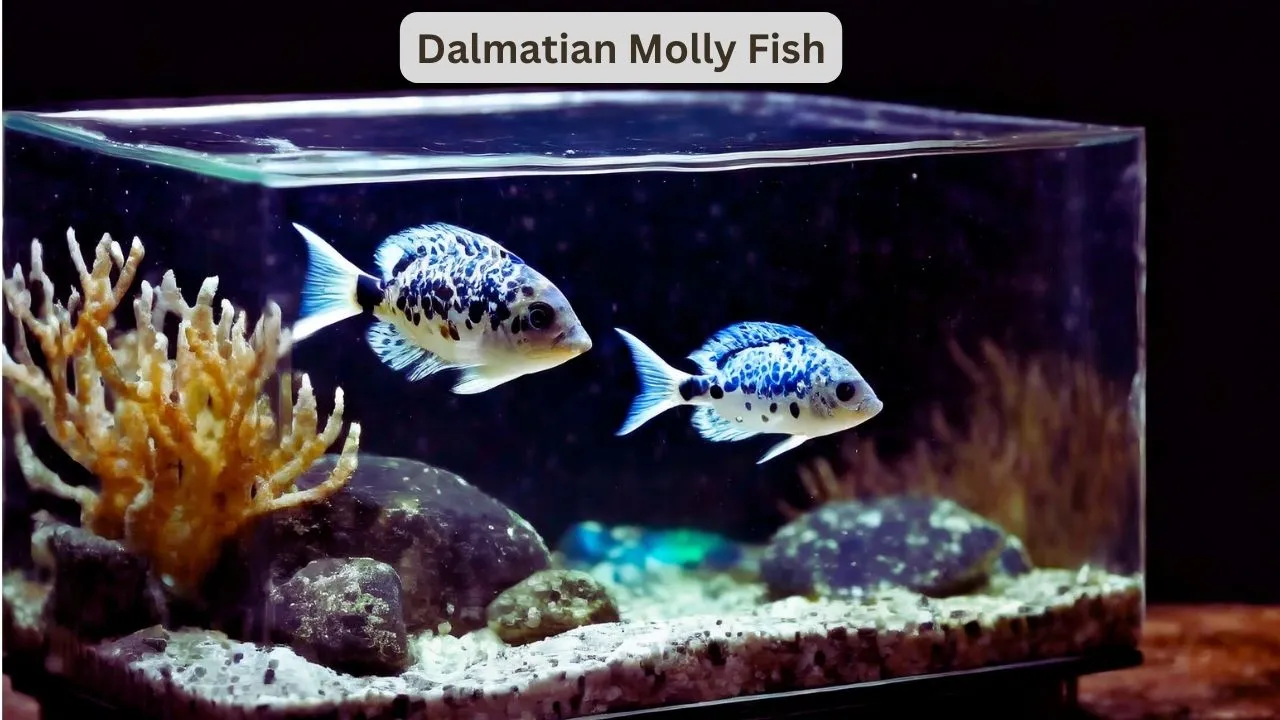The dalmatian molly fish(Poecilia latipinna) is a striking variety of molly fish that has gained immense popularity in the freshwater aquarium hobby. Known for its distinctive black speckles adorning a bright white body, this eye-catching fish certainly lives up to its name, resembling the iconic coat pattern of a Dalmatian dog.
Beyond just its visual appeal, the dalmatian molly also makes an excellent community fish for aquarists of all experience levels. Hardy, peaceful, and relatively simple to care for, these mollies tick a lot of boxes for those seeking an engaging addition to their tank. In this comprehensive guide, we’ll explore everything you need to know to successfully keep and breed these beautiful fish.
What Is Dalmation Molly Fish?
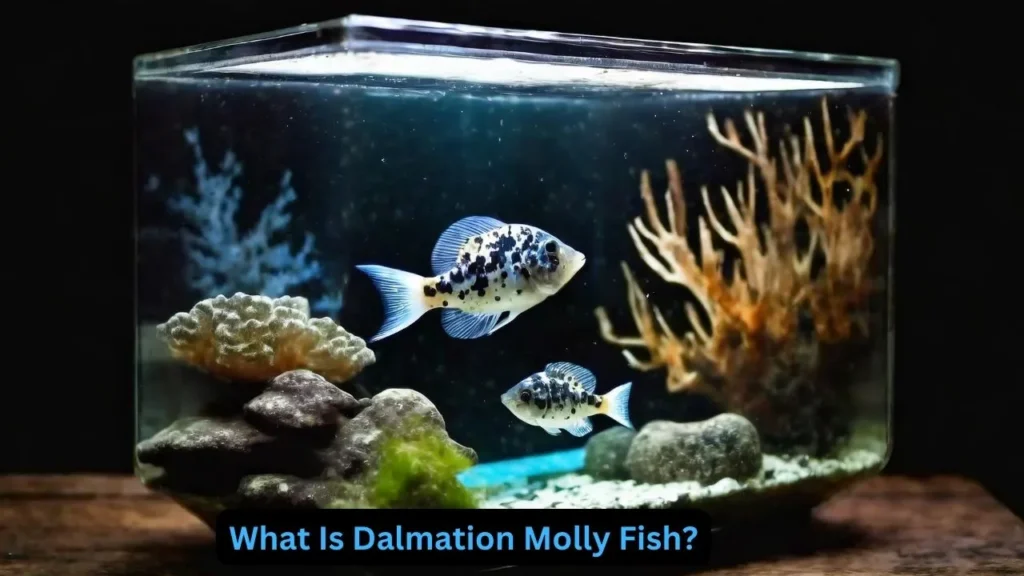
The distinctive dalmatian spotting pattern on certain molly fish is a result of a genetic variation known as the dalmation molly gene. This gene causes clusters of black pigment cells (chromatophores) to be distributed across the body and fins in a speckled, spotted pattern reminiscent of a Dalmatian dog’s coat.
The dalmation molly fish was first discovered in the 1970s when a few black-spotted individuals appeared in the offspring of a sailfin molly (Poecilia latipinna) breeding colony. Breeders selectively bred the fish displaying this unique spotting over many generations to establish the dalmation molly variety.
The inheritance pattern is not fully understood, but the dalmation gene appears to be incompletely dominant. When bred together, two dalmatian mollies can produce fry with solid black, silver, or golden coloration in addition to the spotted pattern. Conversely, breeding a dalmation to a solid-colored molly will yield a mix of dalmation-patterned and solid fry.
The speckled pattern may appear lighter or more diffuse on fry and intensify as the fish matures. Factors like diet, water quality, and genetics can influence how pronounced and evenly distributed the spots appear. With selective breeding, some dalmation strains have been developed with larger, more vividly contrasting black blotches compared to the original finer speckled pattern.
Size and Tank Requirements
When housing dalmatian molly fish, it’s important to have an appropriately sized aquarium to accommodate their adult size and activity levels. Dalmation mollies are not particularly large fish, but they do need some swimming room.
The average size of a full-grown dalmatian molly is around 4-5 inches in length. Males tend to be a bit smaller, topping out around 3-4 inches, while females reach the larger 4-5 inch size. An aquarium of at least 30 gallons is recommended for a school of 5-6 dalmation mollies.
Larger tanks of 40+ gallons allow you to increase the school size and provide even more swimming space for these active fish. Mollies are shoaling species that do best when kept in groups of 5 or more individuals.
Tank Setup
\When setting up the aquarium for your dalmation mollies, there are a few key things to consider for their environment:
Water Parameters: Mollies are tolerant of a wide range of water conditions, but prefer hard, alkaline water in the range of pH 7.5-8.5. Moderate planting and decor that produces gentle currents is ideal.
Decorations: Include plenty of plants, rockwork caves, driftwood, and other decor that breaks up line of sight and provides hiding spots. This reduces stress and aggression. Live or silk plants are best to avoid fin nipping.
Substrate: Use a darker aquarium substrate like soil, eco-complete or gravel. This makes a great contrast for showing off the mollies’ black and white patterning.
Filtration: Dalmatian mollies are active fish that produce quite a bit of waste. Go with a high quality aquarium filter rated for at least twice the tank volume to keep up with water quality demands.
Tank Mates for Dalmatian Molly Fish
One of the great aspects of keeping dalmation molly fish is their peaceful community nature. They make good tank mates for a variety of other species when proper stocking levels and compositions are maintained. Here are some good and bad tank mate options:
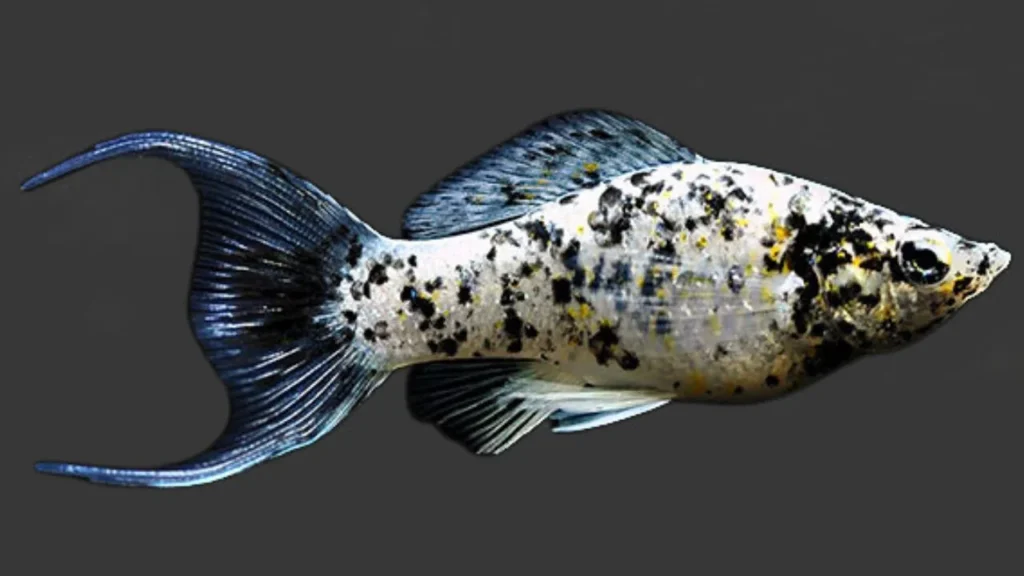
Good Tank Mates:
- Other molly varieties like black, gold, sailfin
- Platies
- Swordtails
- Guppies
- Corydoras catfish
- Tetras (avoid nippy varieties)
- Danios
- Gouramis
- Rainbowfish
Tank Mates to Avoid:
- Very aggressive or territorial cichlids
- Large aggressive barbs
- Aggressive gourami species
- Aggressive betta fish
The key is to avoid tank mates that are extremely aggressive, nippy, or that may outcompete the mollies for food. Provide plenty of plants, rockwork, and other decor to break up sight lines and territories. Proper stocking levels are also vital to reduce aggression triggers.
Dalmatian mollies make a good peaceful centerpiece community fish that can be housed with other mollies, livebearers, tetras, danios, gouramis, rainbowfish, and bottom feeding species like corydoras. Just be sure to avoid any notoriously aggressive tank mates.
Diet and Feeding
Dalmatian mollies are omnivorous fish that require a varied diet in captivity to meet their nutritional needs. In their natural habitats, they feed on algae, aquatic plants, small crustaceans, worms, and insects.
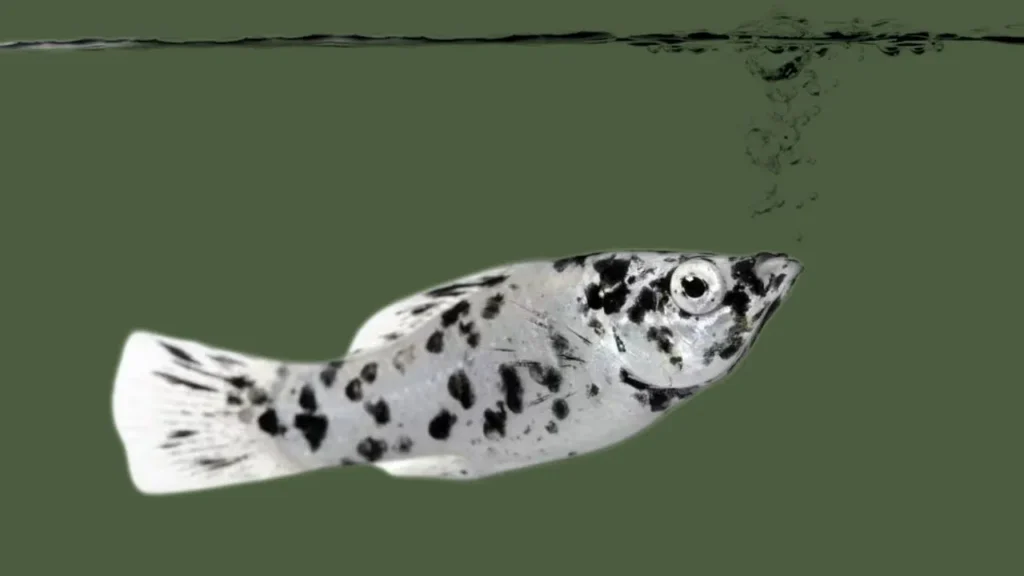
For an aquarium setting, the ideal diet consists of:
High-Quality Flakes/Pellets
Use a high-quality flake or pellet food designed for omnivorous tropical fish as the staple diet. These provide a mix of fish meal, vegetable matter, vitamins, and minerals. Look for color-enhancing ingredients like spirulina and ingredients high in beta-carotene to bring out the mollies’ black and white colors.
Supplement with Vegetable Matter
In addition to flakes/pellets, feed blanched veggie matter 1-2 times per week to provide roughage. Good options include chopped lettuce, cucumber, zucchini, and algae wafers.
Occasional Meaty Protein Sources
To satisfy their appetite for meaty foods, treat mollies to small portions of frozen/live brine shrimp, bloodworms, daphnia, etc 1-2 times per week. This replicates their natural insect/crustacean diet.
Feed mollies 2-3 small portions per day, only what they can consume in 2-3 minutes to avoid overfeeding. An automatic feeder can help if you have trouble regulating portions.
With high-quality varied foods, dalmatian mollies will display their best colors and stay healthy. Avoid foods with excessive fillers/binders that can cause digestive issues or poor growth in these active fish.
Breeding Dalmation Mollies.
Like other mollies, the dalmatian variety is a livebearer that gives birth to free-swimming and immediately independent fry, rather than laying eggs. This makes them very easy to breed in the home aquarium.
Sexing Mollies: Males are smaller, more slender, and develop a gonopodium (modified anal fin) for mating. Females are thicker bodied with a gravid spot near the anal vent when pregnant.
Setting Up a Breeding Tank: For breeding, it’s best to set up a separate 10-20 gallon tank with a sponge filter and lots of live plants and hiding spots. Use an established sponge filter from another tank to seed it with beneficial bacteria.
Conditioning: Condition the molly pair or harem (1 male to 2-3 females) with high quality foods like brine shrimp, daphnia, or quality flakes/pellets. Do daily water changes of 10-20% to keep water pristine.
Birthing Process: Once conditioned, females will appear very plump and give birth in 2-4 weeks. Each female can have 20-100 fry in a single litter! Remove the male after noticing signs of pregnancy to avoid harassment.
Fry Care: The fry are born already free-swimming and able to eat finely crushed flakes or liquid fry food. Provide dense vegetation for cover and do frequent small water changes. The fry grow quickly and can be moved to a grow-out tank in 4-6 weeks.
Culling and Genetics: When breeding dalmation mollies, cull any fry that do not display the desired dalmatian spotting pattern. This helps maintain the distinctive looks. Dalmatian mollies often produce some offspring with incomplete or reverted coloration when bred.
Molly Fish Pregnancy Cycle.
Everything You Need To Know About Pregnant Molly Fish.
Some Common Questions.
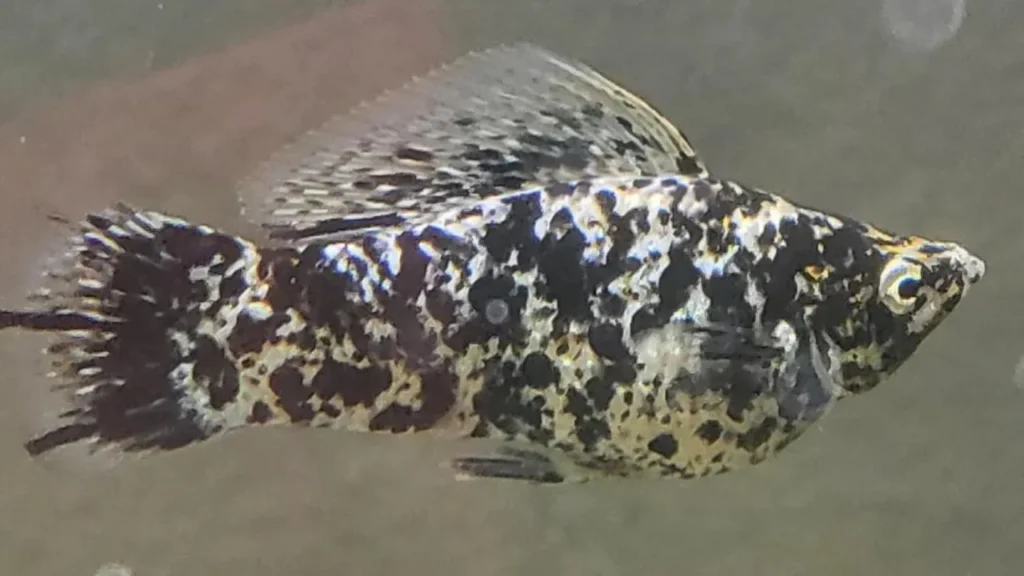
Are Dalmation Mollies Aggressive?
No, dalmatian mollies are generally very peaceful community fish when kept in proper groups and environments. They can display some fin nipping behaviors if stressed from overcrowding, poor water quality, or aggression from tank mates.
Providing ample swimming space, plenty of decor/hiding spots, and avoiding aggressive tank mate species prevents this. Males may squabble briefly during breeding but are not overtly aggressive overall.
Will Dalmation Mollies Eat Other Fish?
Mollies are omnivores with a taste for meaty foods, but they are not particularly aggressive eaters that will consume other fish. Their small mouths prevent them from eating anything but the smallest viable fry from livebearers like guppies.
However, they may nip at the fins and scales of long-finned species like angelfish or bettas, mistaking the flowing fins for food. Proper stocking and environmental enrichment prevents this.
Do Dalmation Mollies Eat Their Babies?
Unfortunately, yes, mollies are known for eating their own freshly born babies in community settings. The fry are extremely tiny at birth, making them easy targets for the parents and any tank mates.
To successfully raise molly fry, set up a separate grow-out tank and remove the parents immediately after noticing signs of pregnancy. The dense vegetation and lack of other fish will allow the fry to survive and grow quickly.
How To Tell If Molly Fish Is Dying?
Final Words.
With their brilliant black and white patterning, peaceful temperament, and ease of breeding, it’s no wonder the dalmatian molly fish has become a favorite in the hobby. By meeting their care needs for environment, diet, and compatible tank mates, these eye-catching livebearers make a wonderful addition to the freshwater community aquarium. With this ultimate guide, you’ll be fully prepared to keep these delightful fish successfully!

